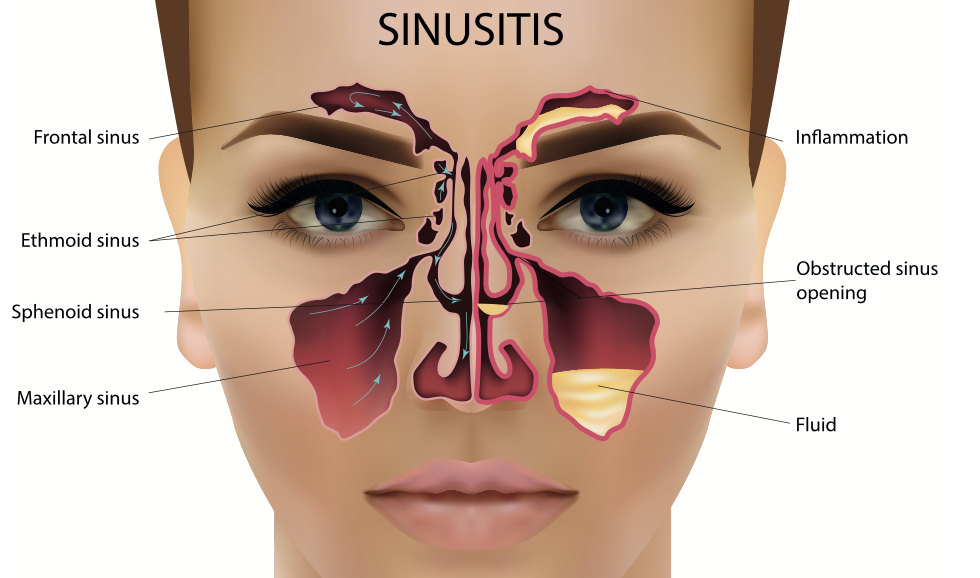Introduction
Sinusitis and facial pain are common presentations in primary care. People may come into the pharmacy concerned that they have a sinus infection. Comprehensive history taking and examination will allow for a confident diagnosis.
The paranasal sinuses are air-containing spaces in the bony structures adjacent to the nose (maxillary sinuses) and above the eyes (frontal sinuses; see also diagram). During a cold, their lining surfaces become inflamed and swollen, producing mucus. The maxillary sinuses are most commonly involved.
The secretions drain into the nasal cavity and, if the drainage passage becomes blocked, fluid builds up in the sinus. This causes pain from pressure that is called acute sinusitis. It can become secondarily (bacterially) infected, but this is rare. If this happens, more persistent pain arises in the sinus areas, and there may be fever and purulent nasal discharge.
Symptoms can last for two to three weeks, during which time most people will get better without treatment, regardless of cause (bacterial or viral). Consequently, antibiotics are not needed for most people. The number of people improving with antibiotics is similar to the number who will suffer adverse effects such as diarrhoea.
Complications of acute sinusitis are rare and withholding antibiotics is unlikely to lead to any issues.
When to suspect acute sinusitis
The clinical pathway for acute sinusitis under the Pharmacy First scheme (see earlier screen) uses the following diagnostic criteria, derived from the NICE Clinical Knowledge Summary for sinusitis:
Presence of ONE of the following signs/symptoms that suggest acute sinusitis:
• Nasal blockage (obstruction/congestion) or
• Nasal discharge (anterior/posterior nasal drip).
And ONE or more of the following:
• Facial pain/pressure (or headache) or
• Reduction (or loss) of sense of smell (in adults) or
• Cough during the day or at night (in children).
As well as a reduction or loss in a person’s sense of smell, other features suggestive of acute sinusitis could be altered speech indicating nasal obstruction, and tenderness, swelling or redness over the cheekbone or periorbital areas.
To diagnose sinusitis, rather than the after-effects of a viral respiratory tract infection, symptoms should have been present for 10 days or more with little improvement.

